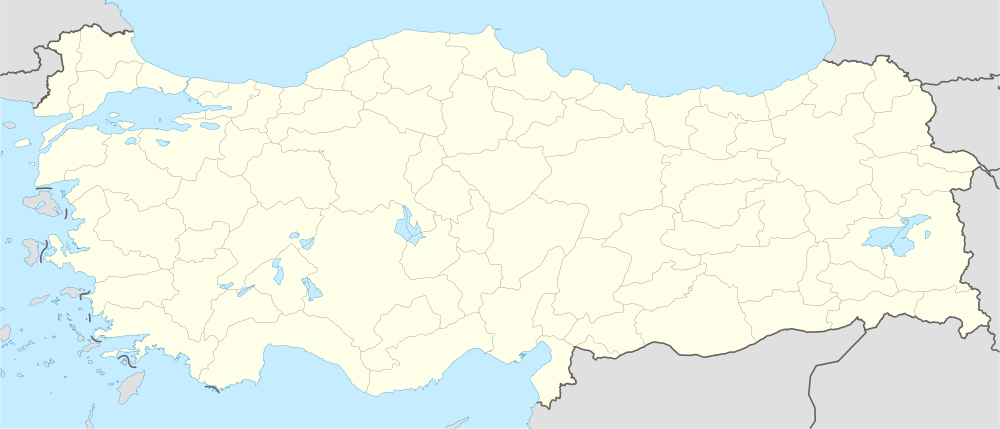Viranşehir
| Viranşehir | |
|---|---|
|
A view from Viranşehir city center | |
 Viranşehir | |
| Coordinates: 37°13′50″N 39°45′55″E / 37.23056°N 39.76528°ECoordinates: 37°13′50″N 39°45′55″E / 37.23056°N 39.76528°E | |
| Country | Turkey |
| Province | Şanlıurfa |
| Government | |
| • Mayor | Mehmet Demir (BDP) |
| • Kaymakam | Erdoğan Kanyılmaz |
| Area[1] | |
| • District | 2,272.27 km2 (877.33 sq mi) |
| Population (2012)[2] | |
| • Urban | 95,896 |
| • District | 172,422 |
| • District density | 76/km2 (200/sq mi) |
| Website |
www |
Viranşehir (Kurdish: Wêranşar) is a market town serving a cotton-growing area of Şanlıurfa Province, in southeastern Turkey, 93 km east of Şanlıurfa city and 53 km north-west of the Syrian border at Ceylanpınar. In Late Antiquity, it was known as Constantina or Constantia (Greek: Κωνσταντίνη) by the Romans and Byzantines, and Tella by the local Assyrian/Syriac population,[3] but is today inhabited predominantly by ethnic Kurds.
History
The name Viranşehir means the ruined city (Old English: mierran, Iranian languages: Viran) and it has indeed been destroyed repeatedly in the course of history.
The city may be the site of Antiochia in Mesopotamia.
According to the Byzantine historian John Malalas, the city was built by the Roman Emperor Constantine I on the site of former Maximianopolis, which had been destroyed by a Persian attack and an earthquake. During the next two centuries, it was an important location in the Roman/Byzantine Near East, playing a crucial role in the Roman–Persian Wars of the 6th century as the seat of the dux Mesopotamiae (363–540).[3] It was also a bishopric, suffragan of Edessa. Jacob Baradaeus was born near the city and was a monk in a nearby monastery.[3] The city was captured by the Arabs in 639.[3]
Modern city
Thanks to the income from cotton Viranşehir is one of the fastest-growing towns in Turkey, the population having more than doubled from 57,461 in 1990 to 121,382 in 2000 (census figures). (The urban population is 89,940 as of 2009.)
The Mayor of Viransehir, Leyla Güven, was detained in December 2009 under Turkey's anti-terror legislation. Her trial began on 18 October 2010. She finally got released on July 2014 with 30 other local elected representatives, after four years of detention.[4]
References
- ↑ "Area of regions (including lakes), km²". Regional Statistics Database. Turkish Statistical Institute. 2002. Retrieved 2013-03-05.
- ↑ "Population of province/district centers and towns/villages by districts - 2012". Address Based Population Registration System (ABPRS) Database. Turkish Statistical Institute. Retrieved 2013-02-27.
- ↑ 3.0 3.1 3.2 3.3 Kazhdan, Alexander, ed. (1991), Oxford Dictionary of Byzantium, Oxford University Press, p. 497, ISBN 978-0-19-504652-6
- ↑ "Congress pleased by release of Leyla Güven and the other elected representatives detained in Turkey"; http://www.coe.int/t/congress/files/topics/leyla-guven/default_en.asp

